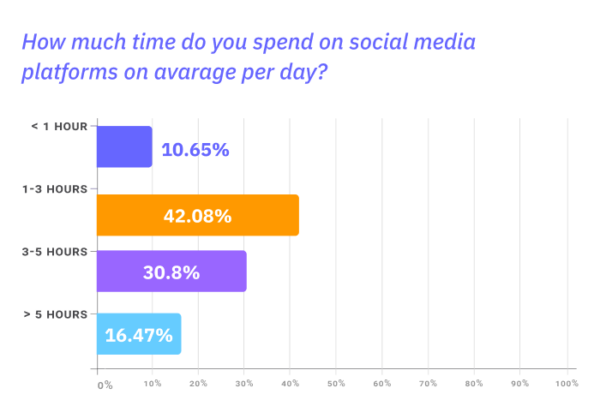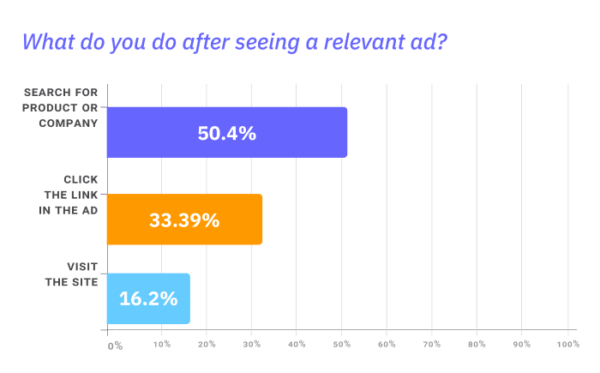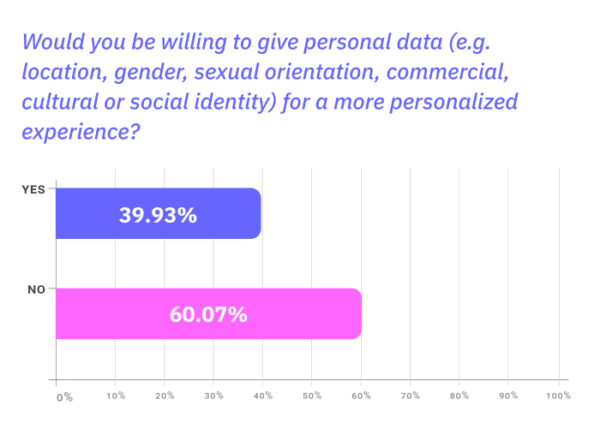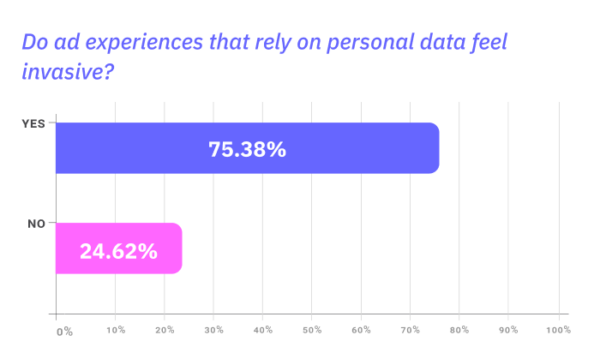Contrary to what many might think, the consumer, not the product, is at the center of marketing and advertising. As new generations are taking center stage, advertisers should dedicate time to understanding what makes the new consumers tick to craft effective messages and choose the appropriate communication channels.
Generation Z is the first digitally native group of customers, which has profound implications on their behavior. We surveyed over 1,000 Gen Zers to learn what can make or break your advertising campaigns. This is what we think you should know when advertising to the world’s youngest consumers.
What Is Gen Z?
Gen Z are people born between 1996 and 2012; Gen Z’s influence and growing spending power already impact how brands communicate and advertise online.
By the end of 2022, Gen Z is expected to make up to 20% of the U.S. population and will account for 40% of global consumers. It’s estimated that in 2022, there will be more than 41 million Gen Z digital buyers in the U.S.
Given all of this, we wanted to dig inside their preferences regarding shopping, social media, and advertising.
In May 2022, we ran a survey in which we asked 1,117 individuals living in the U.S., between the ages of 18 and 26, about Gen Z shopping habits, online behavior, and opinion on advertising.
Based on their responses, we have identified a few important things that can help you understand what they value, how they behave online (specifically on social media), and how they view online advertising.
We divided all our findings into three chapters.
Chapter I: Gen Z Shopping Habits
1. Most Gen Zers have a stable source of income

However, that doesn’t mean that the rest of them have no income at all. Research shows that many Gen Zers (43%) have side hustles, making money as social media influencers, creating handmade stuff, reselling items, flipping items on Amazon, babysitting, or dog walking.
Many Gen Zers are still full-time students, whether they are in high school or college. Therefore, it makes sense for them to look for side hustles until they become full-time employees.
2. Gen Z shops online every month

The share of Gen Z shopping online will further increase as they gravitate towards social commerce. eMarketer anticipates that 55.5% of Gen Z aged between 18 to 24 will make at least one purchase via a social media platform.
3. Gen Zers are not big spenders when making online purchases
Even though the majority of Gen Zers reported shopping online in the last month, it’s important to look at how much they spent as well.

On average, Gen Z saves approximately one-third of their earnings, whether they are putting it into savings or retirement accounts or investing money into crypto, the stock market, and NFTs.
Seeing their parents struggle through the 2008 economic crisis and facing economic uncertainty themselves have shaped Gen Z into a frugal, calculated generation that cares where they spend their money.
4. Gen Zers are not impulsive buyers

The fact that the majority of our respondents said they buy something either when they need it (48.79%) or when there’s a sale (32.68%) proves once again that Gen Zers prefer to save the money they earn and are looking to minimize costs and find the best deals for the products they want.
5. Gen Z votes with their dollars

They are three times more likely than other generations to believe a company has a role in improving society and will support those that take action in this direction.
Gen Zers are highly interested in recycling and protecting the environment and are huge advocates for equality and racial justice.
Chapter II: Gen Z Social Media Preferences
1. Gen Zers are mobile-first digital natives
Generation Z is the first generation of digital natives. They don’t know what it’s like NOT to have access to the internet, especially when the average Gen Z received their first smartphone before the age of 12.
Almost 50% of them are online almost all the time, whether they use social media (their primary means of communication), text, shop, or watch streaming content.
Because they have been served content their entire life, they know how to spot irrelevant information or fake and misleading brands. As a result, they wisened up and know how to do thorough research on brands and products.
The downside of all this is that they have a short attention span, so if you want to grab their attention or make an impression, you only have about eight seconds to do so.
2. Gen Z and social media usage

Social media platforms have a significant impact when it comes to influencing Gen Z’s purchasing decisions. 66% of them say they use Instagram to decide when making a purchase, and twice as many shoppers as Millenials also go on YouTube before buying something.
At the same time, 85% of Gen Z learns about new products on social media, so it’s important for brands to have specific content for all the different channels they use, such as TikTok, Instagram, or YouTube. Gen Z may discover the product you’re selling on TikTok and then go to YouTube to look for reviews or unboxing videos.
That being said, user-generated content can work wonders with Gen Z because it’s more authentic. When it comes to influencers, 70% of Gen Z follow at least one influencer. What’s more, 44% of Gen Z has made a purchase based on a recommendation from an influencer, which is a much higher percentage compared to the general population.
3. Gen Z’s favorite social media platforms

One of the reasons why YouTube, TikTok, and Instagram are highly popular among Gen Z is the fact that this generation is not just about consuming content, they are also content creators themselves.
According to eMarketer, Snapchat is currently the platform with the most monthly Gen Z active users, 44.5 million. However, only 6.27% of our respondents said they use Snapchat the most, which reveals that although lot of Gen Z uses Snap, they spend little time on this platform compared to others.
4. Authenticity matters
Gen Zers want to see brands that speak their language, and not just try to mimic it. Companies can use influencers to build trust on social media, but it’s important to choose those who speak their language and can form an authentic connection with them.
At the same time, Gen Z is smart, unforgiving, and diverse. And they expect brands to understand all of these things about them. In that sense, Gen Z will smell “wokevertising” from miles away and won’t accept performative actions.
Chapter III: Advertising to Gen Z
1. Gen Z likes ads that are…

With Gen Z, it’s all about trust, and here’s a resource on how to build it. They can spot whether a brand is authentic from a mile away, so make sure your advertising aligns with your brand values.
In addition, our findings show that Gen Zers like to see ads for new products of interest, which means that they’re not averse to discovering new brands while they’re scrolling on social media or browsing certain websites.
2. Gen Z dislikes ads that are…

Clikbait is a real issue that hurts brand trust. There’s no surprise that the digital savvy Gen Zers highly dislike this type of gimmick.
Ads that are too long will not connect with Gen Z. This generation is used to information overload and won’t have the patience to watch long ads. You only have about 8-10 seconds to get and keep their attention.
Also, ads that are disruptive or distracting will only leave a bad impression. Try to create ads that match the look and feel of the platform you’re advertising on.
3. Gen Z doesn’t have a clear preference for video ads on social media

Usually, a static image ad is much easier to ignore, but a video ad can easily become disruptive. Although video is king on platforms such as TikTok, YouTube, and Instagram, it appears that when it comes to ads, a mix of static images and video might do the trick.
4. Gen Zers prefer to do their research after seeing a relevant ad

As noted earlier, Gen Zers are digital natives and will take their time researching products and brands because they have certain expectations from them. They will tap into a variety of digital channels like social media platforms, online merchants, and mobile apps to learn more about products. Moreover, they don’t completely disregard offline shopping and may even switch between online and offline shopping experiences.
A fair share (33.39%) will also click the link in the ad, so make sure the page they land on is as relevant as possible to the context of the ad to not appear untrustworthy.
5. Gen Z still trusts traditional advertising
When asked to rank certain types of advertising from most to least trustworthy, here’s what the top looks like for Gen Zers:
- TV
- Display ads
- Billboards
- Social media
- Search ads
- Audio ads
It’s interesting to see that display ads have been ranked first among all the online advertising types, and not social media, where Gen Z spends a lot of hours every day.
6. Privacy concerns

It makes sense for Gen Z to not be as willing to give their information as much as other generations. They care about their privacy and are also aware of the risks that can come with giving away data.
However, a Gen Z Planet study revealed an interesting fact regarding this—64% of Gen Z agree that it’s fine for companies to collect data as long as they are being transparent about it. Yet again, for Gen Z it all comes down to trust.

Also, a majority of Gen Zers (75.38%) believe that ad experiences that rely on personal data feel invasive. This goes to show that the key to reaching and attracting Gen Z through advertising is not necessarily having and using their personal data, but rather relying on creativity and building trust in your brand through ads.
Brands That Do It Well
Our last question was an open one and we wanted to know “What’s your favorite ad from a brand you constantly buy from?” We got 808 responses, so we had a lot of answers to go through.
The main thing that stood out to us was the response “Amazon”, which was given 44 times. Amazon is the largest retailer in the world and the sixth-largest company on the planet. And it makes sense to be on the first place for this open-ended question. Not to mention that, for Gen Z, Amazon is synonym with online retailer, and not the largest river by discharge volume of water in the world.
Here are other huge brands that got quite a few mentions:
- Nike (37)
- Shein (19)
- Target (14)
- Walmart (12)
- Apple (12)
Other brands that received under ten mentions are: Skullcandy, Old Spice, Dr. Squatch, Budweiser, Taco Bell, Doritos, McDonald’s, Old Navy, Adidas, Levi’s, Sephora, Coca-Cola, Lululemon, Fashion Nova.
Aside from these chapters, we also included quotes from experts who know the best way to approach this generation, and key takeaways to keep in mind.
Methodology
The survey ran on Survey Monkey between May 18 and May 20, 2022. It has a total of 1,117 respondents, a confidence level of 95%, and a margin of error of 3%.
When it comes to distribution, we used Survey Monkey Audience, targeting Gen Z individuals between the ages of 18 and 26, based in the U.S.
In terms of household income, we had respondents with an average annual income anywhere between $0 and $200,000+, most of them as follows:
- $0 – $9,999 (14.95%)
- $10,000 – $24,999 (13.70%)
- $25,000 – $49,999 (18.71%)
- $50,000 – $74,999 (12.62%)
- $75,000 – $99,999 (8.15%)
- $100,000 – $124,999 (7.34%)
If you have any questions for us about this survey, don’t hesitate to leave a comment below.



